Clash of the Mammoths
More than 12,000 years ago, 2 bull mammoths engaged in a battle for dominance on the plains of what would later become northwestern Nebraska. Both about 40 years old and evenly matched weighing 10 tons each and standing 13 feet tall, their struggle continued for perhaps hours, until their tusks became locked together and one fell, dragging the other to earth with him. Unable to unlock their tusks from each other, and unable to rise again to their feet, they both eventually died there where they lay. Over the following thousands of years, their bones fossilized and were forgotten.
In 1962 a landowner noticed some very large bones and contacted a team of archeologists. Over the next few days digging uncovered the fossilized bones of one mammoth, but further digging revealed a bonus: a second mammoth, his tusks intertwined with the first. The remains of both were removed from the ground and taken to the University of Nebraska at Lincoln where they were tucked away in a research facility there. In 2006, the remains were finally returned to within a few miles of where they were found to be put on public display at the Trailside Museum of Natural History at Fort Robinson State Park.
Several weeks ago, Harland and I paid a visit to the museum. Just inside the door we were greeted by the looming figure of one of the mammoths.
We stood open-mouthed -staring up at the 13 foot giant.
Just behind him is an exhibit showing how the 2 mammoth skeletons appeared as they were being excavated back in 1962,
and a painted mural on the wall depicts their final battle.
Also included in the exhibit is the flattened skull of an ice age coyote found beneath one of the mammoth bodies.
It’s thought the coyote was either in the wrong place at the wrong time when the mammoths fell, or later as he fed upon their remains, one of the mammoth’s bodies shifted, crushing the hapless coyote beneath its bulk.
We didn’t have as much time as we would have liked to spend at the museum, so someday we’ll have to visit again.
For more information you can find the museum’s website here.
~~~~~~~~~~~~~~~~~~~~~~~~~~~~
[ad name=”Google Adsense”]

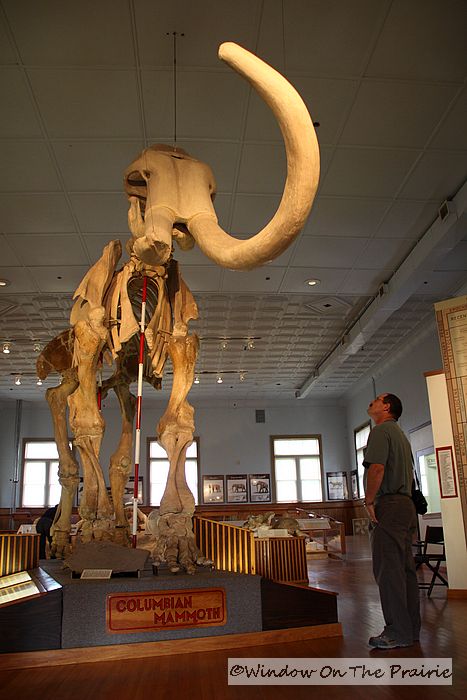
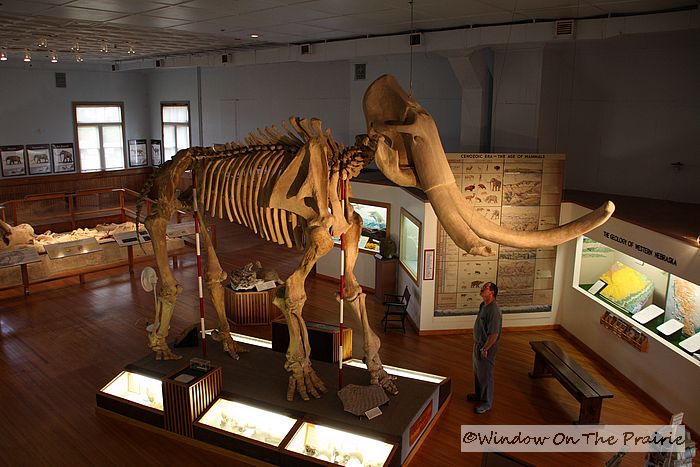
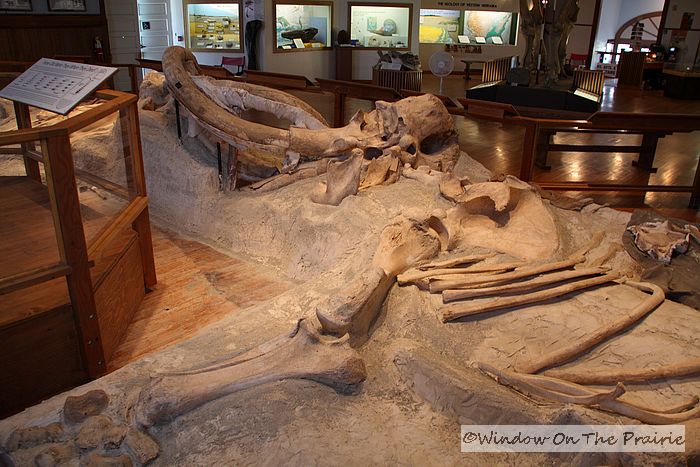
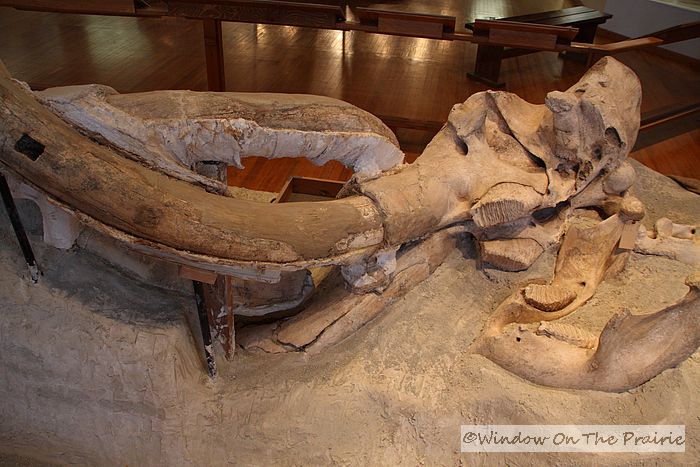
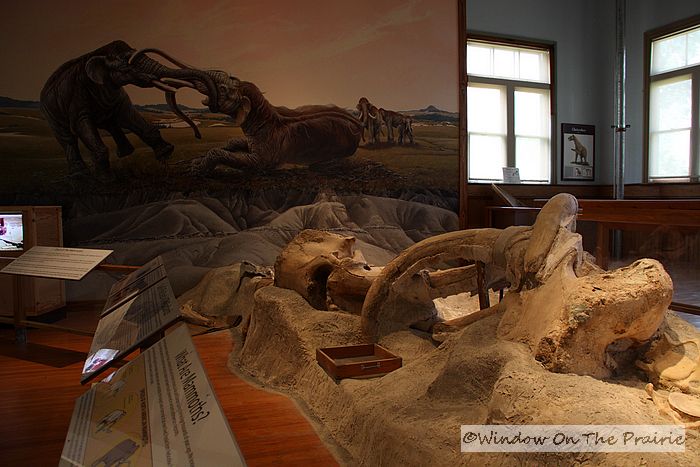
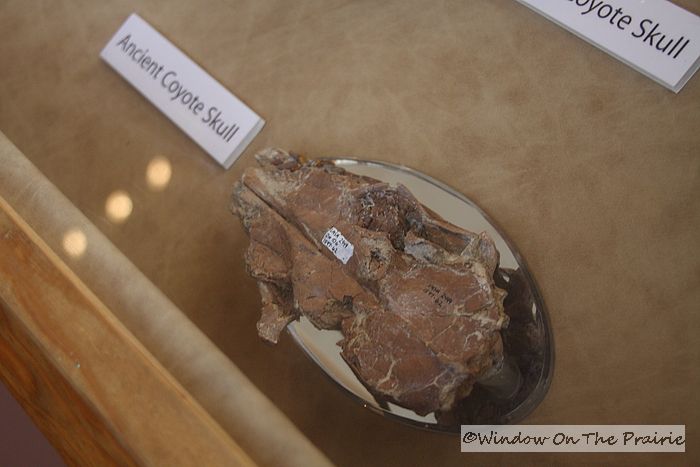
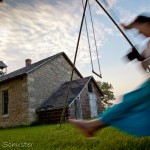
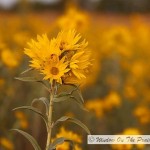



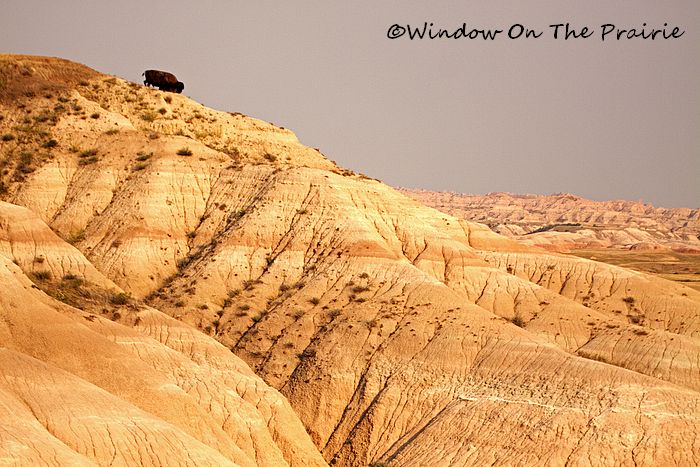

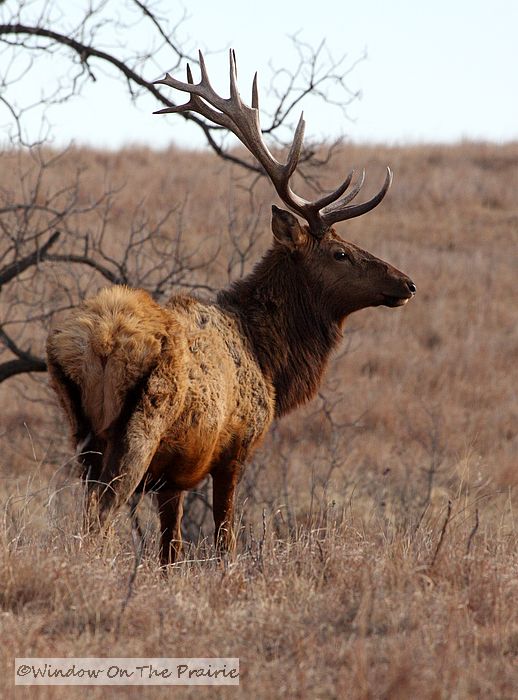
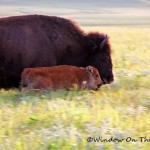
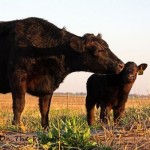

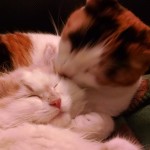

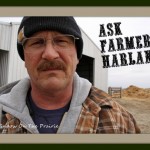




Wow, very fascinating. I would love to check that out sometime.
Well worth a visit. Thanks Stephanie!
Incredible what can be derived and inferred by bones. Archaeology fascinates me-especially that which we have right here in our area of this mighty globe, and then there are the rest of the world’s hidden treasures.
You’re so right, and what is interesting to me is that those mammoths were fighting for dominance, so basically they were fighting over the girls. Nothing has changed. 🙂
Impressive size that young man had. Yes it would cause your mouth to drop open.
Would love to see them fighting. Wouldn’t that be a sight?
It was actually technically not a landowner who discovered the protruding tusk. It was my grandfather George Duane McMillan and his accompanying government land surveyor looking into the construction of the dam that now resides there. The other surveyor was a man by the name of Benny, for short. Which is where the two mammoths got their names “George and Benny”. My grandfather had a BA in animal husbandry, and so he was fairly sure about what it was that they had stumbled upon while surveying the land. He worked his entire professional career within the federal government. He served in the navy during both WWII and the Korean War. He got his BA in animal husbandry under his GI bill through Colorado State University in 1951. And then he got a MA in public administration, at Syracuse University in 1973. Where he acted in a career of being a state conservationist protecting land from Portland, Oregon to Harrisburg, PA…ultimately landing in Salt Lake City where he initially retired. But he lived many of his retirement years in Kingman, AZ and San Luis Obispo, CA. He was always so proud of his mammoth discovery, but pleasantly humble about it. He passed away September 6th, 2020, at the age of 92 (nearing 93) from renal failure brought on from the wild fires dehydrating him…and causing his kidneys to shut down. He passed away peacefully while holding the hands of two of his 4 daughters. And he was quite at peace with and fulfilled in his life. For me, my grandfather was always an incredible inspiration and “hero” or “giant of a man”. And I feel greatly blessed to call him my papa. He also had a deep respect and appreciation for Native Americans. He was raised in Hartford, South Dakota during the Great Depression dust bowl…and was close to the reservation. He even spoke some Sioux language…though he rarely would explain the content of what he would say in that tongue to others. He even would joke about having eaten dog during his youth on the reservation…and that it tasted like “buffalo”. He was valedictorian of his high school…but joined the military to fight in WWII…so was not around to actually deliver his speech at his graduation. And in his retirement years he spent much of the early years of retirement painting beautiful oil landscapes from memory…and fly fishing throughout Utah, Idaho, Wyoming, Montana, and Colorado. In the later years he often enjoyed his routines of gardening, maintaining things on my aunt’s ranch property, and regular walks on the beach with my granny. After she passed away in 2007 he still would visit her every Thursday, since Thursdays were always her doctors appointments. (She had Von Willebrands Disease, that ultimately was what contributed to her passing from a brain bleed from a stroke.) Their love was one that withstood the tests of time, and is the stuff of romance fan fiction. She followed him up to Newfoundland, where he was stationed in his military years…to be married. And it was there where their first daughter was actually born. He really lived such a remarkable life. I cherish being brought up hearing all the tales and stories him and that generation would tell late night around the dinner table while playing pinochle. I would sit captivated and transfixed by their tales and stories, practically transported into their memory and histories…and all of their combined knowledge and wisdom. I have even have a photo of my grandfather standing next to the skeleton of the standing mammoth in this museum…as well as one of his mugs custom printed with that photograph.